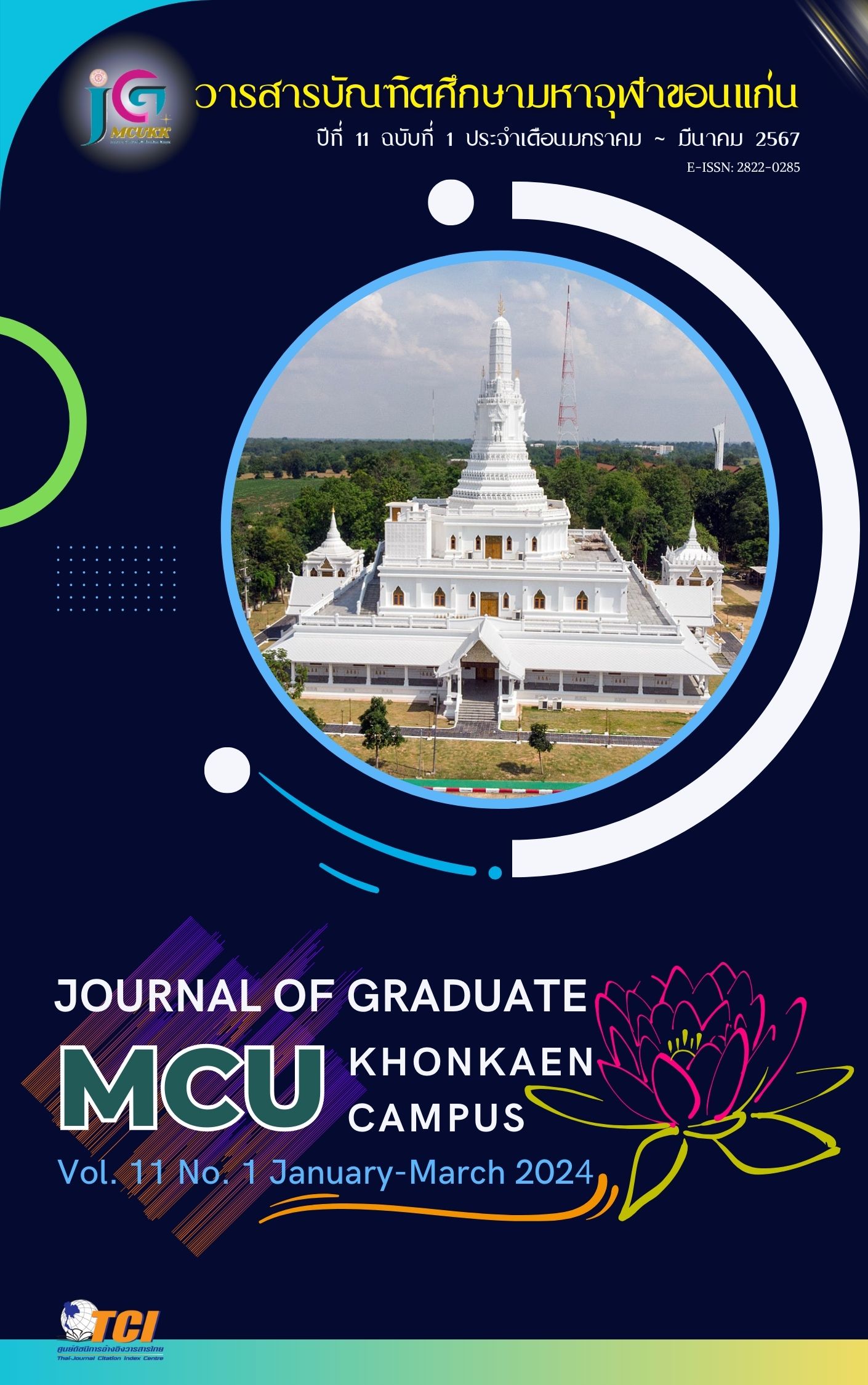The Effect of Reap Strategy Supplemented with Using the Six Thinking Hats Questions on Thai Critical Reading Ability of Mathayomsuksa 3 Students
Main Article Content
Abstract
The results of the research were as follows:
1) Students who are taught by using REAP tactics are supplemented by the use of six thinking hats. Ability to read Thai critically after studying was higher than before. The mean score before learning was 16.65, after learning was 33.45. The students' ability to read critically in Thai after learning was statistically significantly higher than before the level of .05.
2) The students who were taught by using the REAP tactics were supplemented by the use of six thinking hats. The ability to read Thai critically after learning was statistically significantly higher than the normal method at .05.
Article Details

This work is licensed under a Creative Commons Attribution-NonCommercial-NoDerivatives 4.0 International License.
References
ชฎาพร ทับบุญ. (2565). การพัฒนาความสามารถการอ่านอย่างมีวิจารณญาณของนักเรียนชั้นมัธยมศึกษาปีที่ 3 โดยใช้การจัดการเรียนรู้แบบปรากฏการณ์เป็นฐานร่วมกับแนวคิดแบบหมวกหกใบ. (วิทยานิพนธ์ปริญญาครุศาสตรมหาบัณฑิต). พิษณุโลก: มหาวิทยาลัยนเรศวร.
ณัฐพร สายกฤษณะ. (2563). การพัฒนาความสามารถในการอ่านวิเคราะห์และการเขียนสรุปความของนักเรียนชั้นมัธยมศึกษาปีที่ 2 โดยการจัดกิจกรรมการเรียนรู้ตามกลวิธี REAP ร่วมกับเทคนิคการใช้ผักราฟิก. (วิทยานิพนธ์ปริญญาศึกษาศาสตรมหาบัณฑิต). กรุงเทพฯ: มหาวิทยาลัยศิลปากร.
ทิศนา แขมมณี. (2562). ศาสตร์การสอน: องค์ความรู้เพื่อการจัดกระบวนการเรียนรู้ที่มีประสิทธิภาพ. (พิมพ์ครั้งที่ 23). กรุงเทพฯ: จุฬาลงกรณ์มหาวิทยาลัย.
ธนวิทย์ กวินธนเจริญ และ อธิกมาส มากจุ้ย. (2564). การพัฒนาความสามารถในการอ่านอย่างมีวิจารณญาณ และการทำงานเป็นทีมของนักเรียนชั้นมัธยมศึกษาปีที่ 4 โดยการจัดกิจกรรมการเรียนรู้ตามกลวิธี SQP2RS. วารสาร มจร พุทธปัญญาปริทรรศน์, 6(2), 11-21.
โรงเรียนบ้านดุงวิทยา. (2564). ผลการทดสอบผลการทดสอบทางการศึกษาระดับชาติขั้นพื้นฐานหรือ O-NET (Ordinary National Educational Test) รายวิชาภาษาไทย ของชั้นมัธยมศึกษาปีที่ 3. อุดรธานี: โรงเรียนบ้านดุงวิทยา.
วีรภัทร ศุภรสิงห์. (2562). ผลของการจัดการเรียนรู้โดยใช้กลวิธี REAP ที่มีต่อผลสัมฤทธิ์ทางการเรียนวรรณคดีไทยและความสามารถในการคิดเชิงวิพากษ์ของนักเรียนชั้นมัธยมศึกษาปีที่ 5. (วิทยานิพนธ์การศึกษามหาบัณฑิต). กรุงเทพฯ: มหาวิทยาลัยศรีนครินทรวิโรฒ.
สำนักงานเลขาธิการสภาการศึกษา. (2560). แผนการศึกษาแห่งชาติ พ.ศ. 2560-2579. กรุงเทพฯ: สำนักงานเลขาธิการสภาการศึกษา.
Cahyaningtyas, A.P. (2017). The effect of REAP strategy on reading comprehension. Global Conference on Teaching, Assessment, and Learning in Education, 42(1), 1-6.
Eanet, M.G., & Manzo, A.V. (1976). REAP-strategy for improving reading/writing/study skill. Jornal of Reading, 19(1), 647-652.
Renette, R. (2016). Using REAP (Read, Encode, Annotate, Ponder) in teaching reading. Proceedings of the 4th International Seminar on English Language & Teaching (ISELT), 4(2), 278-282.
Supriyantini. (2017). Using read encode annotate and ponder (Reap) technique to increase reading comprehension: Case of the eleventh grade students of SMA Negeri 6 Semarang. Psychology, 8(1), 95-116.

